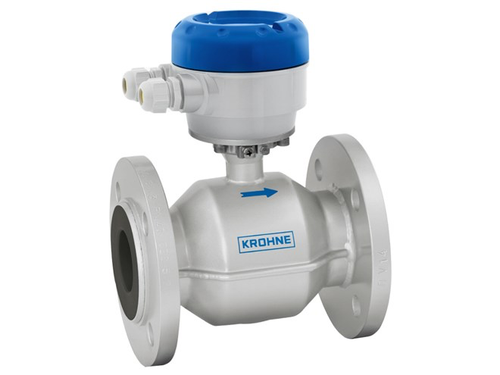Product Overview
The OPTIFLUX 7300 combines the advantages of non wetted capacitive electrodes, a ceramic liner and the IFC 300 converter. This electromagnetic flow meter can be used for noisy applications, low conductivities, mediums tending to form an insulating film, applications with high vibrations, and oxidizing, abrasive and toxic mediums.
Instead of conventional electrodes that have a direct contact with the process liquid, OPTIFLUX 7300 has a non-contacting capacitive signal pick-up. The electrodes are designed as large-area capacitor plates, mounted behind the ceramic liner. Because the electrodes have no contact with the medium, unwanted catalytic action with metallic parts is eliminated. A second benefit is that the insulation of electrodes no longer forms a risk. In case of a medium that tends to form a non conductive surface coating on the tube wall, the signal pick up between medium and electrodes will not be interrupted.
The smooth and pore free ceramic tube construction does not leak and is CIP / SIP resistant, making it highly suitable for hygienic applications in for example the food & beverage and pharmaceutical industry. It is very hard, non permeable and has an extreme and broad chemical resistance, fulfilling requirements of the chemical industry.
The construction of the OPTIFLUX 7300 offers an absolute leak tight solution, because leakage through the liner and leakage along the electrodes is not possible.
The IFC 300 converter standardly includes extensive diagnostics of the process and meter and powerful filter settings for stable flow measurements.
Industries include:
- Chemical
- Food & beverage
- Pharmaceutical
- Paper & pulp
- Wastewater
- Machine building
- Primaries
Applications include:
- Toxic, aggressive and abrasive mediums
- Emulsions: latex, emulsion paints
- Adhesives
- Organic mass production
- Low conductive mediums: (bio-) alcohols, spirits, glycols, glycerine
- Abrasive slurries
- Water mixed with oil or metallic particles
- Fibrous products
- Oil-based products: vegetable oils
- Dairy products: fat creams, milk, cheese, yoghurt with fruit particles
- Cement







